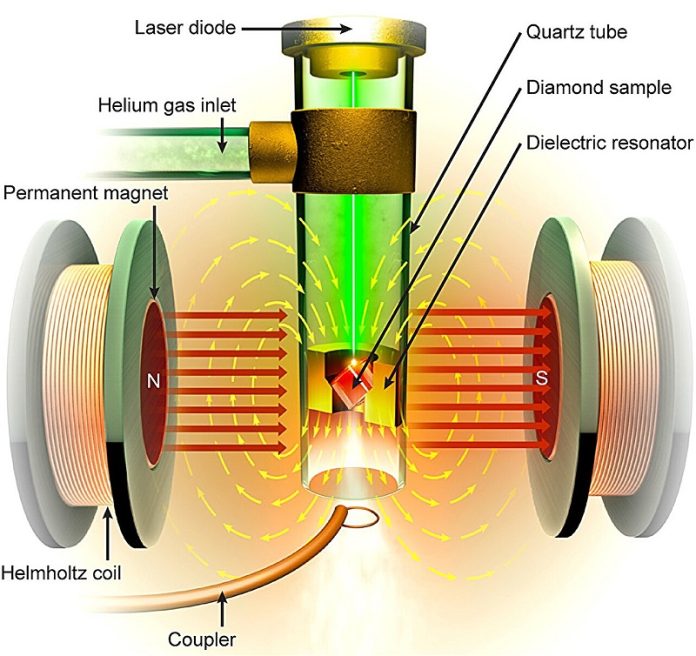
Diamonds have always been admired for their beauty, but now they might become a powerful tool for astronomers and scientists.
Researchers at UNSW Sydney have created a special device called a maser that uses a lab-grown purple diamond to amplify weak microwave signals.
This innovation could help detect signals from deep space, like those from pulsars, galaxies, or distant spacecraft, and it works at room temperature—unlike previous masers that required costly cooling to extremely low temperatures.
The research, led by Associate Professor Jarryd Pla, was published in Physical Review X.
It explains how the diamond’s unique properties amplify weak signals without the need for cryogenic cooling.
A/Prof. Pla says, “Our room-temperature maser avoids the complications and high costs of cooling equipment to minus 269°C. It’s also much more compact, making it a practical solution.”
The maser developed by UNSW engineers uses a diamond with tiny imperfections known as nitrogen vacancy (NV) centers.
These imperfections are created by replacing a carbon atom in the diamond’s crystal structure with a nitrogen atom, leaving a small empty space next to it.
When the NV centers are placed in a magnetic field and exposed to a strong green laser beam, they create a system that amplifies incoming microwave signals.
As the microwaves pass through the diamond, the NV centers make copies of the signals, boosting them up to 1,000 times their original strength while adding very little noise.
This is a big advantage over traditional amplifiers, which need to be cryogenically cooled to reduce random electrical noise, known as thermal noise.
Without this cooling, thermal noise can overwhelm weak signals, making them difficult to detect.
This breakthrough could significantly improve how scientists detect faint signals from deep space.
For example, signals from spacecraft like Voyager 1, which is over 15 billion miles away from Earth, could be amplified more effectively using this technology. The maser’s ability to work at room temperature could also make it more affordable and accessible for space exploration.
The potential applications don’t stop there. Defense systems, like radar, could also benefit from this technology. Radars work by sending out electromagnetic signals and detecting the signals that bounce back. A maser capable of amplifying weak radar signals could improve the accuracy of detecting objects’ location, speed, and size.
The UNSW team is continuing to refine their maser. They aim to increase the density of NV centers in the diamond, as a higher concentration produces more amplification and reduces noise. However, growing diamonds with too many NV centers can create unwanted defects, so the team is carefully balancing this process.
Mr. Tom Day, lead author of the study, explains, “We need to make the diamonds more purple. The purple color comes from the NV centers, and more NV centers mean better amplification.”
The team is also collaborating with manufacturers in France and Japan to improve the device’s resonator, which could further reduce noise.
With more advancements, the researchers believe a commercial version of the maser could be ready within two to three years. This technology has the potential to revolutionize space exploration and other industries, making it easier to detect faint signals and unlock new discoveries.
Source: University of New South Wales.



